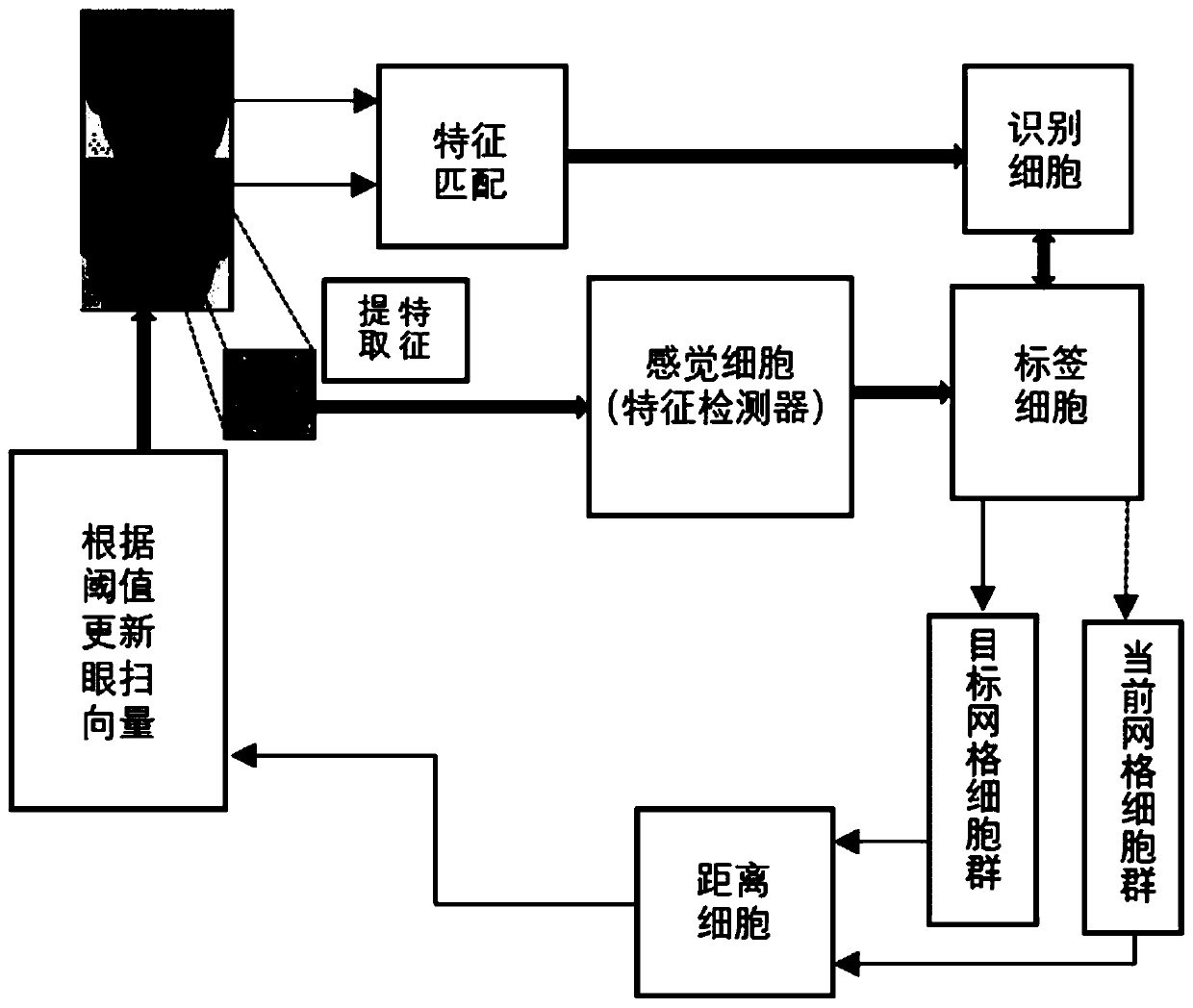HOG algorithm image recognition method based on grid cell memory
A grid cell and image recognition technology, applied in the field of image recognition, can solve the problems of high power consumption, artificial intelligence image recognition relying on big data training samples, etc.
- Summary
- Abstract
- Description
- Claims
- Application Information
AI Technical Summary
Problems solved by technology
Method used
Image
Examples
Embodiment Construction
[0063] The present invention will be further described below in conjunction with the accompanying drawings and embodiments.
[0064] The HOG algorithm image recognition method based on grid cell memory in this embodiment includes establishing a HOG algorithm image recognition system based on grid cell memory, and the described HOG algorithm image recognition system based on grid cell memory includes a HOG algorithm module and A grid cell memory model, the grid cell memory model comprising:
[0065] Grid cells, which are used to anchor each feature of a given stimulus, which is the input image, and the relative positions of the anchored features on all grids are consistent with each other;
[0066] distance cells, which are used to calculate displacement vectors between sites encoded by grid cell population vectors;
[0067] sensory cells, i.e. feature detectors, which are cells with a Gaussian tuning curve over possible image pixel values;
[0068] Labeling cells, driven by ...
PUM
 Login to View More
Login to View More Abstract
Description
Claims
Application Information
 Login to View More
Login to View More - R&D
- Intellectual Property
- Life Sciences
- Materials
- Tech Scout
- Unparalleled Data Quality
- Higher Quality Content
- 60% Fewer Hallucinations
Browse by: Latest US Patents, China's latest patents, Technical Efficacy Thesaurus, Application Domain, Technology Topic, Popular Technical Reports.
© 2025 PatSnap. All rights reserved.Legal|Privacy policy|Modern Slavery Act Transparency Statement|Sitemap|About US| Contact US: help@patsnap.com



